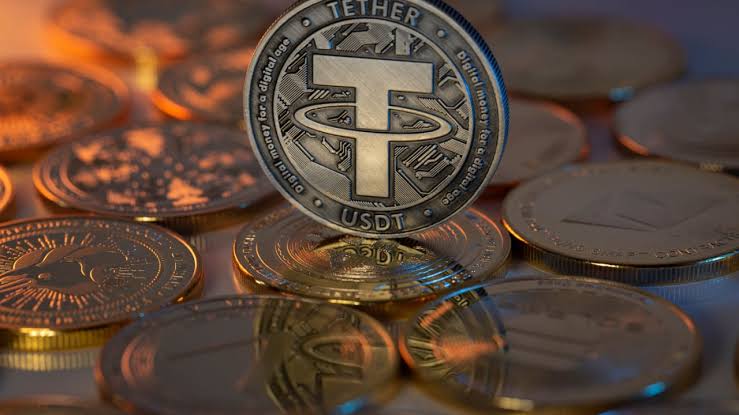What are Stablecoins? Features and Risks
One kind of cryptocurrency that is meant to keep its worth over time is called a stablecoin. Most stablecoins are tied to a real currency, usually the U.S. dollar, so their value stays the same. One unit of the cryptocurrency is usually equal to one unit of the real cash in this case. The price of stablecoins is not supposed to change like the price of Bitcoin or other cryptocurrencies that are very changeable.
To deal with high volatility and get more people involved in a bigger community, crypto projects are building price stability directly into their digital assets. This is creating a whole new group of cryptocurrencies called stablecoins.
As the name suggests, stablecoins are meant to be investments with low volatility whose value is similar to fiat currencies like the U.S. dollar. We need to dig a little deeper to fully understand what stablecoins can do and how they work with cryptocurrencies that are more volatile.
What are Stablecoins?
A stablecoin is a type of cryptocurrency that should have the same value as another relatively “stable,” asset like the U.S. dollar, the euro, or gold.
There is a type of cryptocurrency called a stablecoin whose value is tied to something else, usually a currency like the U.S. dollar or the euro, but it could be anything. The value of this type of cryptocurrency coin stays the same over time, at least compared to the currency it’s tied to. As a result, it’s like the core asset has become digital, like a digital dollar.
The assets that stablecoins are tied to are often used to back them up because their goal is to track an asset. For instance, the group that creates a stablecoin usually sets up a reserve at a bank that holds the base asset. A stablecoin could leave $100 million on hand and print 100 million coins, each of which would be worth $1. The real money can be taken from the reserve if the owner of a stablecoin wants to cash out the coin.
A lot of cryptocurrencies, like Bitcoin and Ethereum, are backed by nothing, but this system is not. These other cryptocurrencies’ prices change a lot, unlike stablecoins. This is because traders are constantly trying to make money by driving up and down the prices.
On the other hand, most of the biggest cryptocurrencies by market cap are unstable. Many people say that because these assets are so volatile, they are hard to use as payment. In 2010, for instance, one Bitcoin was only worth enough to buy a candy bar. Today, that same Bitcoin might be worth as much as a car. Like Bitcoin, the value of some other cryptocurrency has gone down as much as it has gone up. As a buyer, you want some stability in the object you buy, so this volatility can be hard to deal with.
By lowering this volatility, stablecoins provide a choice that might be more appropriate for everyday use. Millions of people like stablecoins because they can be used to make payments across borders, have low transaction fees, and offer self-storage choices. They also combine the stability of traditional fiat currencies with the flexibility of digital assets. Before we can figure out why, we need to know how stablecoins work.
Types of Stablecoins
There are different kinds of stablecoin. Each uses a different method to keep its value stable.
Stablecoins backed by fiat money try to keep a reserve ratio of 1:1 with their own currency. As an example, Tether is tied to the US dollar at a 1:1 ratio. This means that every unit of Tether should be backed by a US dollar, and every dollar worth of Tether should be backed by an equal amount of assets. “”
A central bank digital currency (CBDC) is a digital version of a government-issued cash. CBDCs are different from other cryptocurrencies because they are backed by the government and released by a country’s central bank. The value of a CBDC is linked to the value of the country’s main currency.
To understand how stablecoins are backed, let’s look at the different kinds:
- Fiat-collateralized stablecoins: To keep the value of their stablecoin stable, fiat-collateralized stablecoins hold a balance of a fiat currency like the US dollar.
- Commodity-backed stablecoins: These use valuable metals like gold and silver or commodities like crude oil as their collateral.
- Crypto-collateralized stablecoins: These are stablecoins that are linked to other cryptocurrencies, like Bitcoin or Ether. Reserve coins can go up and down in value, so their reserves must be higher than the stablecoin’s market capitalization. This is called “over-collateralization,” and it’s done to make sure the economy works well.
- Algorithmic stablecoins: These keep their value stable on the market using algorithms and economic design. These stablecoins haven’t been tested and are the riskiest ones out there right now. The prices of many of them have dropped to zero, wiping out billions of dollars in value.
Is Bitcoin a Stablecoin?
As of now, Bitcoin (BTC) is not a stablecoin. Through fiat currencies or other assets like gold, stablecoins seek to keep a stable value. In contrast, Bitcoin’s value changes all the time.

Also Read: Traditional Banks vs Custodian Wallets: Basic Concepts and Differences
Uses of Stablecoins
What can we do with stablecoins, which appear to be a good asset on paper? Are they useful enough to use in real life? Yes, that’s correct. We can use stablecoins in the following ways:
- Store value: Unlike other cryptocurrencies, the value of stablecoins tends to stay the same in relation to the object they are backed by. This means that people who own stablecoins can store value.
- Trade assets: People who want to trade cryptocurrencies can use stablecoins as trading pairs. This helps them keep their value and gives them a better idea of how the value of a cryptocurrency is changing.
- Get interest: People can get interest on stablecoins they give out. Keep in mind that these marking services are often dangerous and aren’t allowed in some countries. Before using them, make sure you know what the risks are.
- Transfer money at no or low cost: Users don’t have to pay a lot of money to send money to someone else in another country. People can send and receive stablecoins for less than a few cents when they use low-fee chains. With stablecoins, you can send money anywhere in the world without a bank account.
- Send Money Internationally: You can send money to other countries right away because there aren’t any transaction fees and the money is processed quickly. Stablecoins are a simple, quick, and cheap way to send money around the world. It can cost less than $0.10 to send $200 across borders using stablecoins, while the average cost of doing so using traditional means is $12.
The Popular Stablecoins
We now know about the different kinds of stablecoins and how they work. Next, let’s look at the most well-known stablecoins on the market.
Tether (USDT)
Tether is the most famous fiat-backed stablecoin in the world, with a market value of about $65 billion. It was also the first stablecoin to be sold on the crypto market, and it has the most transfers around the world, making it the most liquid stablecoin. People have said that USDT isn’t backed 1:1 like they say, but this hasn’t been proven yet.

USD Coin (USDC)
Dollar Coin, or USD Coin, is linked to the value of the US dollar. It is a stablecoin backed by real currency. This means that at any time, a person can buy or sell a USDC for $1. As of this writing, there are 55.8 billion USD Coins in circulation around the world.
Binance USD (BUSD)
With a market cap of $17.5 billion, Binance USD is the third-largest stablecoin by market cap. It is a fiat-backed stablecoin project started by the crypto exchange Binance and Paxos. The value of one bitcoin is equal to one US dollar.
Dai
In 2017, MakerDAO put Dai on the Ethereum blockchain. One type of stablecoin is Dai, which is backed by ether, the cryptocurrency used on Ethereum. Its value is tied to the US dollar. DAI is not centralized like other stablecoins; instead, it uses smart contracts and rewards to keep its value.
TrueUSD (TUSD)
The TUSD from TrustToken is a stablecoin that is backed by real money and runs on the Ethereum blockchain. The value of one TUSD coin is equal to one US dollar right now. People can make and spend TUSD tokens on TrustToken’s website.
How Do Stablecoins Function as a Currency Hedging Strategy?
There is a lot of inflation in many standard fiat currencies, especially in places where interest rates are high. The US dollar and the euro, on the other hand, have been less affected by inflation over the past 20 years. Stablecoins like Tether and USDC are backed by the US dollar, so they may not rise as much as local cash would. People can trade their cash for stablecoins, which protect their money from US dollar growth and help it keep more of its value.
So, stablecoins give users the same chance to keep value as people who hold US Dollars, no matter where they are. Anyone with access to the internet can use stablecoins to make daily transactions.

Risks of Using Stablecoins
The best of both worlds may appear to be stablecoins. But they come with their own risks.
- Depegging: The goal of a stablecoin is to keep its worth constant and be backed by a fiat currency. Stablecoins that lose worth from where they were supposed to be are called “depegged stablecoins.” Luna is the best example of this because investors lost tens of billions of dollars when its value dropped.
- Regulatory Risk: Stablecoins are still subject to legal risks even though they are pegged to fiat currencies. Like, Meta, the company that owns Facebook, had planned to release its own stablecoin in 2020. It was called Diem. But the company called off the launch because of worries and backlash from banking regulators.
- Lack of transparency: Ideally, currency reserves would back stablecoins with cash or other safe investments. But because they aren’t regulated, it’s hard to tell if stablecoins really get as much backing as they say they do. If there isn’t enough support, bad things could happen like TerraUSD’s fall, which would then affect the whole crypto market.
- Inflation of linked assets: Stablecoins are supposed to protect you from inflation, but they still go up in value at the same rate as the assets they are tied to. For instance, if the US dollar’s inflation rate is higher than 9%, the price of the product goes up. This means that something that used to cost $100 would now cost $109. Flatcoins, whose value would be backed by a basket of things and not rise in value, are one idea for how to fix this problem. Even though flatcoins haven’t been used yet, they could become the world’s biggest currency one day.
Conclusion
The loss of stability in most cryptocurrencies is partially made up for by stablecoins. But people who use stablecoins should be aware of the risks they come with. In normal times, stablecoins may not seem to pose many risks. However, during a crisis, when they should be the best to hold, they may become the riskiest.
Disclaimer: The advice or assertions offered here reflects the author’s own viewpoints and is prone to change depending on the state of the market. Before buying any cryptocurrency, you really should do some market research. Neither the author nor this publication (CryptoNeuz) accepts any liability for any financial losses you could suffer.






One Comment